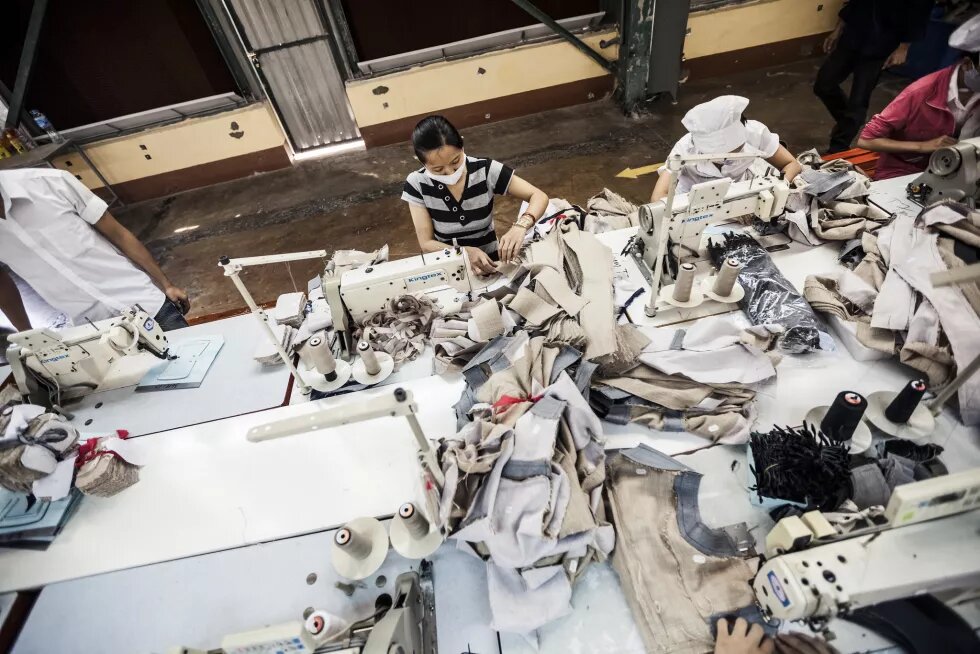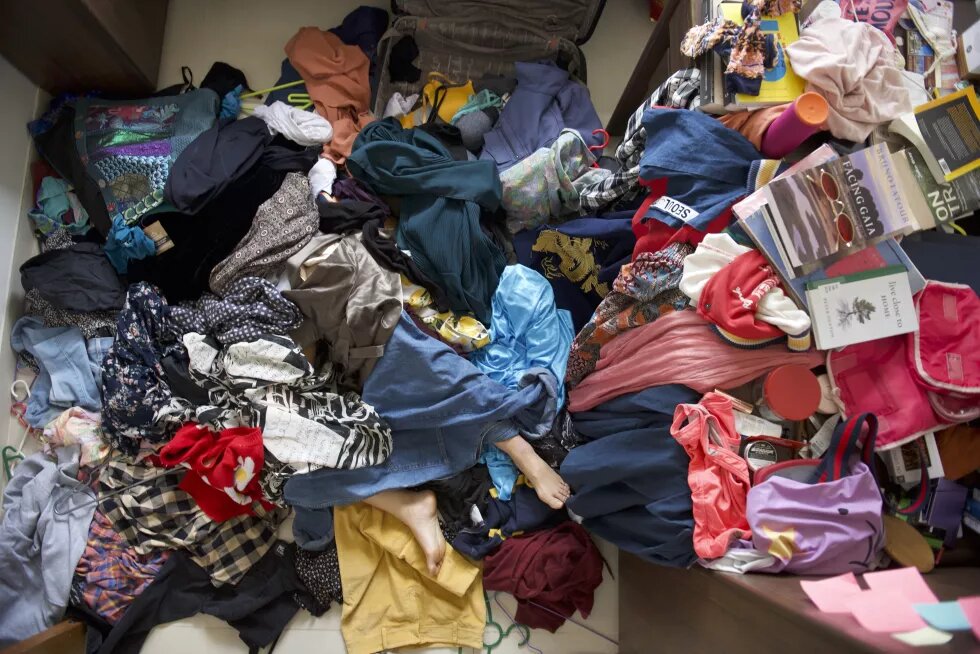
I have always loved dressing up. When I was younger, I would don the shiniest, brightest, most colourful, sparkly outfit I had. My favourite one was this yellow two-piece knit set, with iridescent plastic seashells all over them. I would wear it and swish around, jangle the plastic shells which would make a chik chik chik sound. Growing up, fashion was my differentiator, my identity, my armour.

Yet today, I stand at a crossroads and wonder how I can reconcile this love for fashion with being an environmentalist. It is an industry that thrives by creating artificial demand to drive mindless consumerism. Many fashion companies also exploit and mistreat their workers to feed the fast fashion monster. The amount of waste that this industry produces is also mind-boggling, not to say the pollution that is created at every level of the fashion supply chain.
But some days, dressing up is what gives me absolute joy. Fashion is the creative language I speak, but if now it creates more harm than good, I wonder if it is time to find a new one.
The Language of Fashion
To someone who does not care much for fashion, it does not make much sense. What does it matter if a person wears pink with that particular shade of blue, or with that particular pair of white boots? It can seem very frivolous and superficial; and sometimes, it most definitely is frivolous and superficial.
Yet I can tell you, from personal experience, that fashion has brought me a real sense of identity and lots of joy. It has always been my main medium for creativity and expression, and without it, I wouldn’t quite feel the same. I used to plan my outfits for the one Sunday where I went out weeks in advance. When I finally got to dye my hair crazy colours, I was beyond elated. I would make fashion scrap boards and pour through runway looks; I made my own rings and loved borrowing my mom’s clothes. One of my favourite past times when I was old enough to go out on my own was going to the then-newly opened H&M to try on a whole bunch of clothes.
Throughout my life, many people have told me that “only you can pull this off”, with regards to some outfit I wore. To which, in response, I vigorously deny. My reply is always, “You can pull it off, if you believe you can pull it off.” The thing is, fashion is not just about the clothes on your back. It is about the way you carry them. And through fashion, I learned how to carry myself.
When I wear something I love, the way I feel when moving around in the world is different. The air is crisp with possibility, the day is already set to be pretty good, sometimes I feel like dancing.
Fashion is also a huge reason why I love people-watching. I used to sit at train stations and just watch people walk by. When I travel, hitting the main spots usually does not concern me – I am happy sitting at one café and just watching people stroll by. What a person wears is a window into their person. Observing what people wear leads me to be curious about the people themselves, and it keeps my sense of wonder alive. And when I see someone wearing an outfit I REALLY like, it honestly just makes my day! It’s fresh inspiration for new creations.
Observing is also the first step of learning this language of fashion. So, when I people watch, I am learning new words, new adverbs and adjectives, new sentence structures and ways of speaking. I learn what I like and what I don’t like, and how to appreciate and celebrate those different from myself.
Whether you love or hate fashion, every day, when you put on something to wear, you are speaking.
A Corrupted Language
The problem, however, is that the language of fashion is corrupted. At its roots, wearing clothing is a way of identifying oneself, of communicating and of expression. But modern fashion as we know it today was born from the couture houses of Paris who catered mostly to wealthy individuals and royals, before expanding into the mass market of America. Their designers were often concerned about fame and wealth, of being the first to start a trend, to break into a market – and to sell, sell, sell. Doubtless, many of them created beautiful clothes, works of art that explored new aesthetics and new ways of being. But a designer’s lifeblood is to be on the fashion magazines, to grow an adoring fanbase, and to keep making sure they sold the designs they created. Fashion, then, is really about selling.
Today, with fast fashion, we see that exaggerated to almost a ridiculous level. Instead of a new collection of clothing twice a year – Spring/Summer and Autumn/Winter collections – fast fashion brands change their racks every two weeks. Trends change quicker and quicker, because brands want their customers to consume more and more of their products. In the last 15 years, more clothes have been produced, but we now wear them less[1]. Previously, people may have taken longer to consider buying a piece, and if bought on impulse, experience Buyer’s Remorse and regret their purchase. But with the cheap price tag of fast fashion, brands are able to push customers to “buy first, think later”. There is no issue of Buyer’s Remorse, because trendy clothes cost next to nothing. And if they do not like the piece any longer, they simply throw it away or let it collect dust in their wardrobes.
Lightning fast trends also mean that there is great pressure on garment factories to churn clothes out at an impossible timescale – at a huge cost for the people working in them. Many people producing the clothes you buy are barely surviving on their salary—93% of a survey on 90 major clothing brands are not paying their workers a living wage[2]. They are being inhumanely treated, with some factories banning toilet breaks[3], for example. Women are also unsafe at these workplaces: in a survey, it was found that 1 in every 2 women workers in garment factories in Southeast Asia has experienced sexual harassment.[4]
As a result, the impact of fashion on the Earth is astounding. It is responsible for 10 per cent of global carbon emissions—more than all international flights and maritime shipping[5]. In China, 2.5 trillion litres of wastewater is released into rivers annually[6]. Furthermore, the industry is projected to use 35% more land for fibre and textile production (which often means deforestation to clear land for crops like cotton) by 2030 – an extra 115 million hectares that could be left to protect local ecosystems, biodiversity and livelihoods.[7]
The numbers are too large to understand, too abstract to truly grasp. But know this—the lives of real people, like you and me, are at stake here. Heck, our own lives are at stake, too! And for what? For others to earn more money, which they then use to feed their own consumption monsters. The cycle goes on continuously with no end in sight, and with no real purpose and thus, no real satisfaction.
Is It Possible?
How, then, can I continue speaking this language, when it is woven from a system that puts profits before life? I must learn a new one, one that can reconcile artistry, creativity with love and respect for other humans, the other-than-human beings we share this space with and the environment itself. One that is radically different from the current state of things. But what would that look like?
One company that I think has come a little close to speak this new language is Patagonia. I think about their Black Friday ad in The New York Times back in 2011 that featured their jacket with the words “Don’t Buy This Jacket.” I think about their courage in addressing consumerism at its root with that ad, although people called the hypocrites. In the short accompanying article they wrote about that ad, they willingly admit that not all the products they sell meet their own standards yet, but then show how they are continuously working on it. Where it really hits me is when they say that they aim to create products that are ‘useful, multifunctional where possible, long-lasting, beautiful but not in thrall to fashion.’ It is not that beauty should not be an ideal to reach for. But we should not be chained to ever-changing trends that are created only to sell, sell, sell.
How does this all apply to my personal struggle with fashion? I think it harks back to two things—authenticity and imperfection.
I have a vision of a clothing industry that is circular, sustainable, fair, localised, steeped in culture and slow. So, I try my best to create a shift towards this vision—whether that is through consciously not being chained to trends, buying second-hand only when I need to, sewing my own clothes, advocating against fast fashion, writing articles and creating art. But I know that I can only do these things imperfectly. That systems change can take a long time (or all of a sudden, as we have seen with COVID-19). That there will be things that I buy because it was on sale, on a whim. There will be times I scroll through Instagram to follow the latest trends. There will be times I buy clothes (even if they are second-hand) when I definitely don’t need more.
Learning a new language is hard. When that language is not even fully formed or created yet—I cannot expect to be fluent! Instead, I have the freedom to try, to fail, and then try again.
References
[1] In the last 15 years, clothing production has doubled, while the average number of times a piece of clothing is used has decreased by 36% (Ellen MacArthur Foundation, 2017)
[2]Fashion Checker (2020, https://fashionchecker.org/).
[3] https://www.sbs.com.au/news/dateline/bathroom-breaks-banned-for-factory-workers-reveals-damning-fashion-industry-report
[4] Fashion Revolution, Why We Still Need a Fashion Revolution (April 2020, https://www.fashionrevolution.org/why-do-we-need-a-fashion-revolution/).
[6] ”China’s textile industry discharges about 2.5 trillion liters of wastewater into its rivers annually…Among these wastes are many hazardous chemicals… that are banned or strictly regulated in other countries because they are toxic, persistent, bio-accumulative, hormone disruptive, and can cause cancer.” https://e360.yale.edu/features/can_waterless_dyeing_processes_clean_up_clothing_industry_pollution
[7] Ibid.